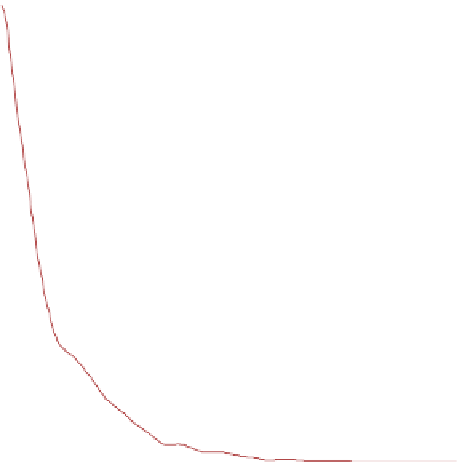Geoscience Reference
In-Depth Information
a random parcel within their neighborhood, but only one household can occupy a
parcel. Agent decision making is defined by the conceptual model developed above,
where households assess the probability of choosing a given vacancy (
P
ij
) via either
distance-only or distance-plus-direction strategies. Households assess vacancies
comprised of existing vacancies and recently developed houses, choosing vacancies
per their move distance (given as a negative exponential distribution) and directional
bias (per a von Mises distribution) as specified by the migration chain data.
6.3.2.3
Step 3: Simulate Migration
A key advantage of ABM is that they can be straightforward to run; for once agents
are specified, and they are simply set in motion and dynamically interact with each
other and the environment. Each model year, three processes occur. First, institutions
apply policy rules on which areas can and cannot be developed. Second, developers
build houses in developable locations that are added to the vacancy list. Third,
households migrate, per direction and distance-and-direction rules, to new parcels
and place their old houses on the vacancy list. Based on actual moves given by
the parcel data, the estimated in Eq.
6.1
for distance in the TCMA is 0.160 for
2005-2007 and the estimated is 0.085 for Eq.
6.2
for direction (Fig.
6.4
).
0.15
0.10
Negative Exponential Distribution
e
(−
ʻ
X)
(
)
=
ˁ
x
ʻ
ʻ
= 0.16
0.05
Empirical
Theoretical
0.00
0
10
20
30
40
50
Move Distance (mile)
Fig. 6.4
Empirical distribution of move distance-and-direction



















































Search WWH ::

Custom Search